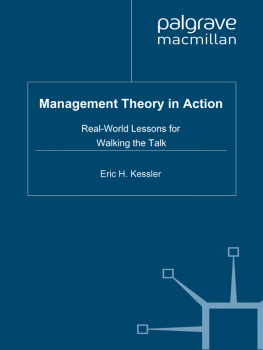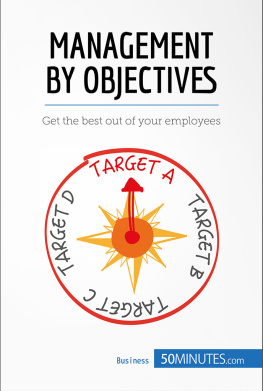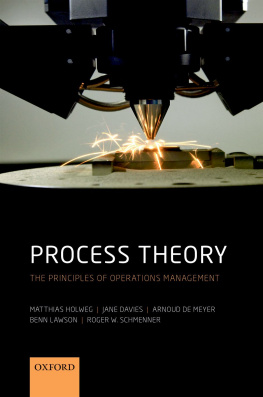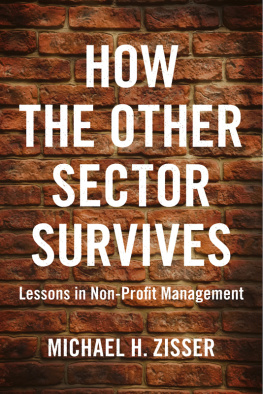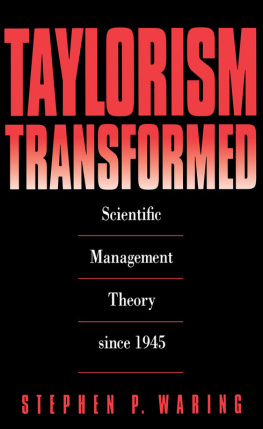Management Theory in Action
Management Theory
in Action
Real-World Lessons for
Walking the Talk
Eric H. Kessler


MANAGEMENT THEORY IN ACTION
Copyright Eric H. Kessler, 2010.
All rights reserved.
First published in 2010 by
PALGRAVE MACMILLAN
in the United Statesa division of St. Martins Press LLC,
175 Fifth Avenue, New York, NY 10010.
Where this book is distributed in the UK, Europe and the rest of the world, this is by Palgrave Macmillan, a division of Macmillan Publishers Limited, registered in England, company number 785998, of Houndmills, Basingstoke, Hampshire RG21 6XS.
Palgrave Macmillan is the global academic imprint of the above companies and has companies and representatives throughout the world.
Palgrave and Macmillan are registered trademarks in the United States, the United Kingdom, Europe and other countries.
ISBN 9780230607583
Library of Congress Cataloging-in-Publication Data is available from the Library of Congress.
Library of Congress Cataloging-in-Publication Data
Kessler, Eric H.
Management theory in action : real-world lessons for walking the talk / Eric H. Kessler.
p. cm.
Includes index.
ISBN 9780230607583
1. Management. 2. Leadership. I. Title.
HD31.K4613 2010
658.4001dc22
2009031257
A catalogue record of the book is available from the British Library.
Design by Newgen Imaging Systems (P) Ltd., Chennai, India.
First edition: March 2010
10 9 8 7 6 5 4 3 1
Printed in the United States of America.
To my parents, Nat and Lori, and my brother, Scott, who in their practical intelligence, uncompromising integrity, and unwavering authenticity are wonderful models for walking the talk.
INTRODUCTION
We See It All too Often...
An eager young business student gets straight As in school but fail miserably on her first internship. She just cannot figure out what her college courses have to do with this strange new world. To the casual observer, it would seem like she is completely unprepared for the challenges that face her in the workplace. Result: this stellar student is not offered any challenging assignments and not asked back next summer.
A freshly minted MBA graduate secures an interview at a prestigious firm but fails to impress the interviewer. During the talk he spouts a dizzying array of names, dates, and technical terminology but this does not make a positive impression. When given sample business scenarios to solve, the graduate cites research statistics and abstract theoretical models to support their generic cookie-cutter ideas but does not deliver specific actionable recommendations. Result: this high pedigree applicant does not get the job.
A high-potential new employee starts her first month at the office but becomes utterly lost in the day-to-day pragmatics of management life. When she retreats back to old textbooks for help, none of the actual items on their daily agendas can be found per se in the chapter indexes or tables of contents. It is as though her highly priced school lessons got lost in translation when being applied to her job, and she just cannot seem to link concrete problems with theoretical solutions. Her people dont respond to her actions and her groups seem to spend more time fighting with each other than accomplishing anything. Result: this promising individual earns poor performance reviews and falls off the fast track.
An upcoming middle-level manager is sponsored by his firm to return to school for a masters in business administration (MBA) degree but, when sitting in the classroom, is taken aback by the lack of connection between the professors lectures and the real business world. He becomes extremely cynical of the textbook theories, tunes out the professors lessons, and sleepwalk through what he considers to be a waste of his money and time. Result: this investment yields little return as the manager comes back to the workplace with no discernable improvement in his abilities and lacks the career bump he had hoped for.
An incoming management consultant is asked by a firm to help redesign their business model and eliminate inefficient practices. Despite the best efforts to motivate the workforce, the consultant cannot seem to grasp the logic of business structure and is constantly rebuffed by its deeply ingrained culture. The consultants polished pitches fail to overcome employees anxiety and make any headway with implementation as managers quickly regress back to old routines and perspectives. Result: the firm does not reverse competitive shortcomings and the expert-for-hire does not return or receive any referral business.
A long-time organizational veteran is becoming increasingly oblivious to new management techniques and technologies promoted by their organization. They cannot seem to keep pace with all of these buzzwords and, feeling that they should stick with what has worked in the past, they find that these old habits are not always useful in the modern workplace. When dealing with global subsidiaries, they cannot seem to get a handle on why they do so many things differently around the world than at the home office. Result: the employee spends ineffectual sunset years in a lowimpact position with reduced opportunities to leverage their experience or contribute to the firms success.
We see it all too often... but we do not have to.
What is the common thread here, the missing ingredient, the root cause of these frequent management failures?
Many readers will surely be familiar with the old saying, Out of the frying pan and into the fire. Essentially the adage refers to a leap from a hot, difficult situation into a hotter, more difficult one. In the scenarios described earlier, the frying pan can be seen to represent the business school and the world of management theory whereas the fire is the actual business environment and the world of business practice. The classroom is meant to enhance peoples abilities and prepare them for succeeding in the workplace. Students learn concepts and skills, and are thus assessed and graded, in this frying pan. However, the real test is whether they can successfully utilize them under fire. This is the ultimate goal of classroom teachers, research scholars, corporate trainers, management consultants, school administrators, corporate executives, and textbook writersand it is the preeminent objective of business studentsbut it is hard to predict and even harder to measure. Unfortunately there is just no guarantee that the knowledge, skills, and abilities learned in the frying pan will ever successfully transition to the fire. A persons classroom GPA (i.e., book smarts) might literally be an A but his or her proverbial report card at work (i.e., life smarts) could very well be an F.
Bottom lineAll too frequently there is a fuzzy if not downright poor relationship between learning management theory and executing management practice. This gap is the missing link, or the broken bridge if you will, which explains the failures detailed in opening paragraphs and constrains people from effectively putting their knowledge to good use.
Rebuilding the bridge between management theory and action is the subject of our book.
The Problem
Let us begin with a simple truthThere is a difference between knowing something and doing something. This distinction goes back centuries, and it is grounded in both eastern and western intellectual as well as religious traditions that emphasize the importance of both seeing and actually walking along a right path. The idea is particularly well captured by the philosopher Aristotle, who clearly differentiates (a) intellectual sophia, a theoretically deep understanding of reality and (b) applied phronesis, or the practical skill and behavioral alacrity needed for succeeding in the real world. Relating the lesson to our modern business context, we might conclude that the recipe for success is to translate the former (reflective thought) into the latter (informed action). This book is primarily concerned with helping the reader bridge the theory-practice fissure in the business world.
Next page
